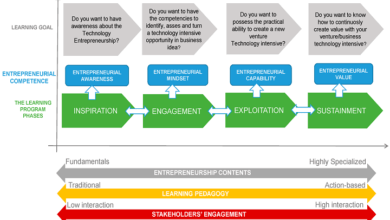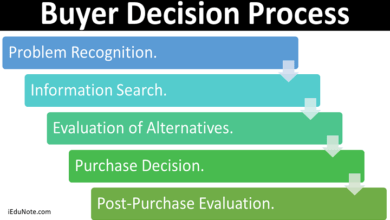
After you’ve gone through the method involved with planning, creating, and coordinating dresses in your store, you need to choose what to value your things. Customers don’t delay until they arrive at the sales register to check the sticker price. Deciding the right cost is a promoting strategy that helps welcome and energize clients.
The following are three inquiries to pose to yourself prior to choosing what to value the apparel in your store.
- Who Is Your Manufacturer or Wholesaler?
The expense for creating your dress will contrast contingent upon which producer or distributor you use. To acquire a benefit, your should sell your things at a more exorbitant cost than what the makers and wholesalers charged you to make them. This expense-based evaluating system assists you with recognizing a base deal’s cost. Concerning your definite value, there are other estimating strategies to layer on top of the expense-based way to deal with the assistance you conclude the amount to increase the cost.
Keystone is the point at which a merchant duplicates the cost from its past cost, regardless of whether that vendor is a retailer, producer, or distributer. The two wholesalers and makers use cornerstone markups – makers selling at twofold the creation expenses and wholesalers at twofold the assembling cost. This is the reason we inform removing wholesalers regarding the buying system: why purchase a piece of clothing for twice the assembling cost when you can essentially get it at cost?
While numerous retailers choose the key stoning strategy, a 100% markup might be excessively difficult for certain brands. For lesser-realized brands selling in a serious market, it’s ideal for inclining toward sensibility over benefit, without thinking twice about all things considered.
There is likewise Manufacturer Suggested Retail Price to consider. MSRP is the value a maker encourages a retailer to utilize. MSRP normalizes worldwide valuing of specific things and items. Nonetheless, this turns into an issue if you sell in a cutthroat market. While your cost should fit the Market you’re in, it ought to likewise vary from those of your rivals, regardless of whether sequential.
- Where Do You Fall in the Market?
Numerous store proprietors expect that the ideal method for standing apart from their rivals is to offer the least expensive cost. Notwithstanding, raising your costs past your rivals can likewise winnow clients. Assuming you publicize your image as great, greater costs will build up that standpoint. Since Starbucks views itself as the “head purveyor of the best espresso on the planet,” clients hope to pay more for a Starbucks espresso than a Dunkin Donuts latte. Other than top-of-the-line brands charging more, VIP marks additionally partake in a higher deals cost. Their items get quick acknowledgment upon their delivery on account of the name the big name has set up for themselves. This is the reason Kylie Jenner can pull off a $20 lipstick.
In case you are not yet a set-up brand, your clients will expect lower costs. Clients who examine the apparel racks of low-end stores aren’t hoping to purchase garments for the brand name; they are just hoping to purchase garments at a sensible cost. If so, you should address their issues. Realizing your designated clients’ needs can assist you with setting a cost for your attire.
Something else to remember as you explore a serious market is who your immediate rivals are. Value wars are just important if the other brand is an immediate contender. As recently referenced, in the event that you can offer something else from another store, cost turns into a side component. Assuming, be that as it may, one of your rivals offers comparative items along these lines, use cost as a differentiator. Know which contenders represent a danger prior to bringing your value down to surpass theirs.
- Which Psychological Tricks Do You Want to Employ?
There are three mental stunts that many stores use to accumulate clients.
1) Multiple Pricing
Different Pricing is when stores sell various things together at a solitary cost. Selling different things in a pack gives the deception of a preferable arrangement over purchasing everything separately. Nintendo tracked down progress with this stunt, selling more handheld control center items when the gadgets accompanied a game.
2) Discounted Pricing
Another famous methodology is to offer rebate estimating. Nothing is more engaging than a markdown. Considering this, Amazon presented “Amazon Prime Day,” a day where items sell at a limited cost. A few organizations have even raised item costs before “Amazon Prime Day” so they could jump into the rebate frenzy without decreasing their ideal overall revenue. The equivalent can be said for “The shopping extravaganza following Thanksgiving.”
3) Anchor Pricing
Anchor evaluating plays on the rebate stunt by sharing the past cost of a thing (with the cost crossed out) close by the refreshed cost. The more exorbitant cost goes about as an anchor, an estimation of this current thing’s worth. When the cost is lower than the secured value, clients presently feel it merits purchasing that thing, thinking about it “ought to be purchased for additional.” All the more frequently, cost decides esteem rather than the reverse way around.
4) An Odd and Unusual Trick
In William Poundstone’s book Priceless, he observed that deals expanded by 24% when costs finished in an odd number. Concerning which odd number to tail toward the finish of your value, analysts at MIT and the University of Chicago observed that number 9 is the most compelling. Between a ladies’ clothing thing timed at $34, $39, and $44, the $39 thing sold the most.
Consider utilizing these three inquiries as a manual to conclude the best value point for the attire in your store.




